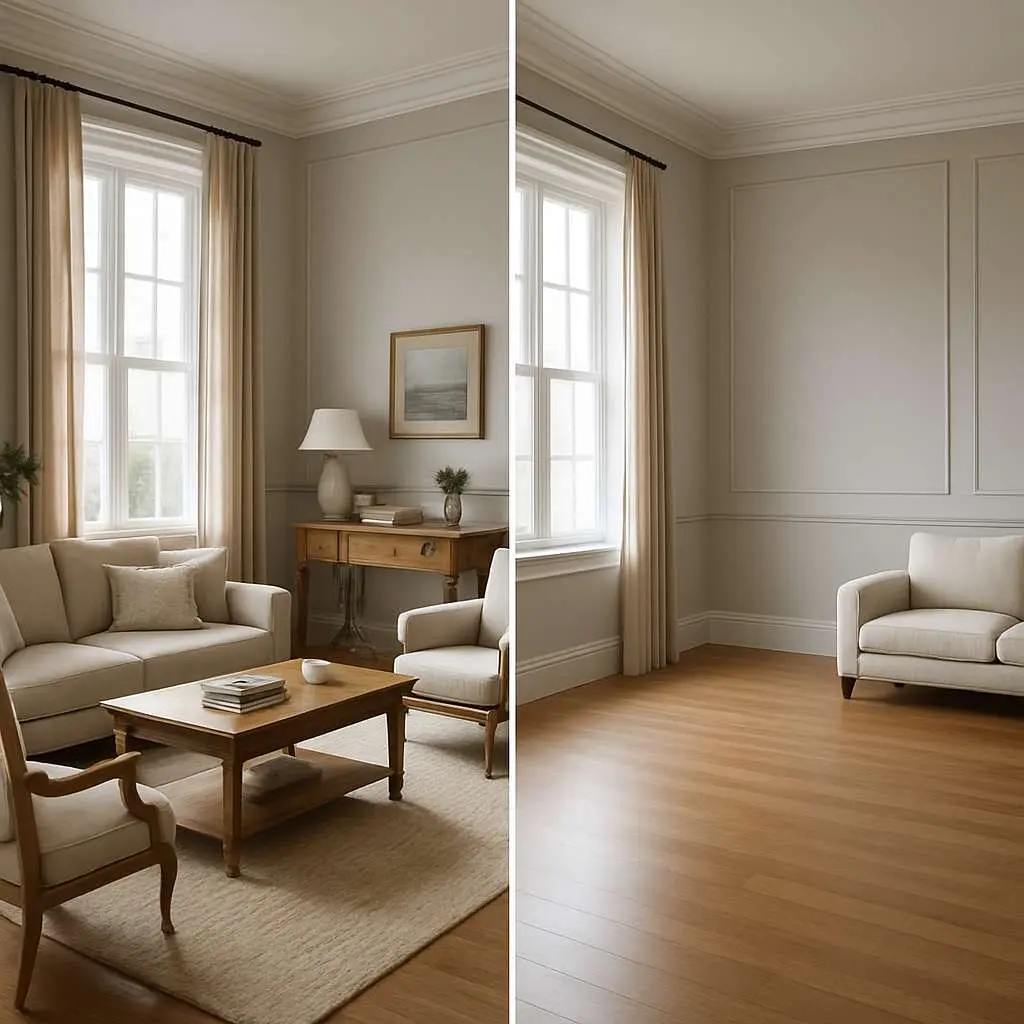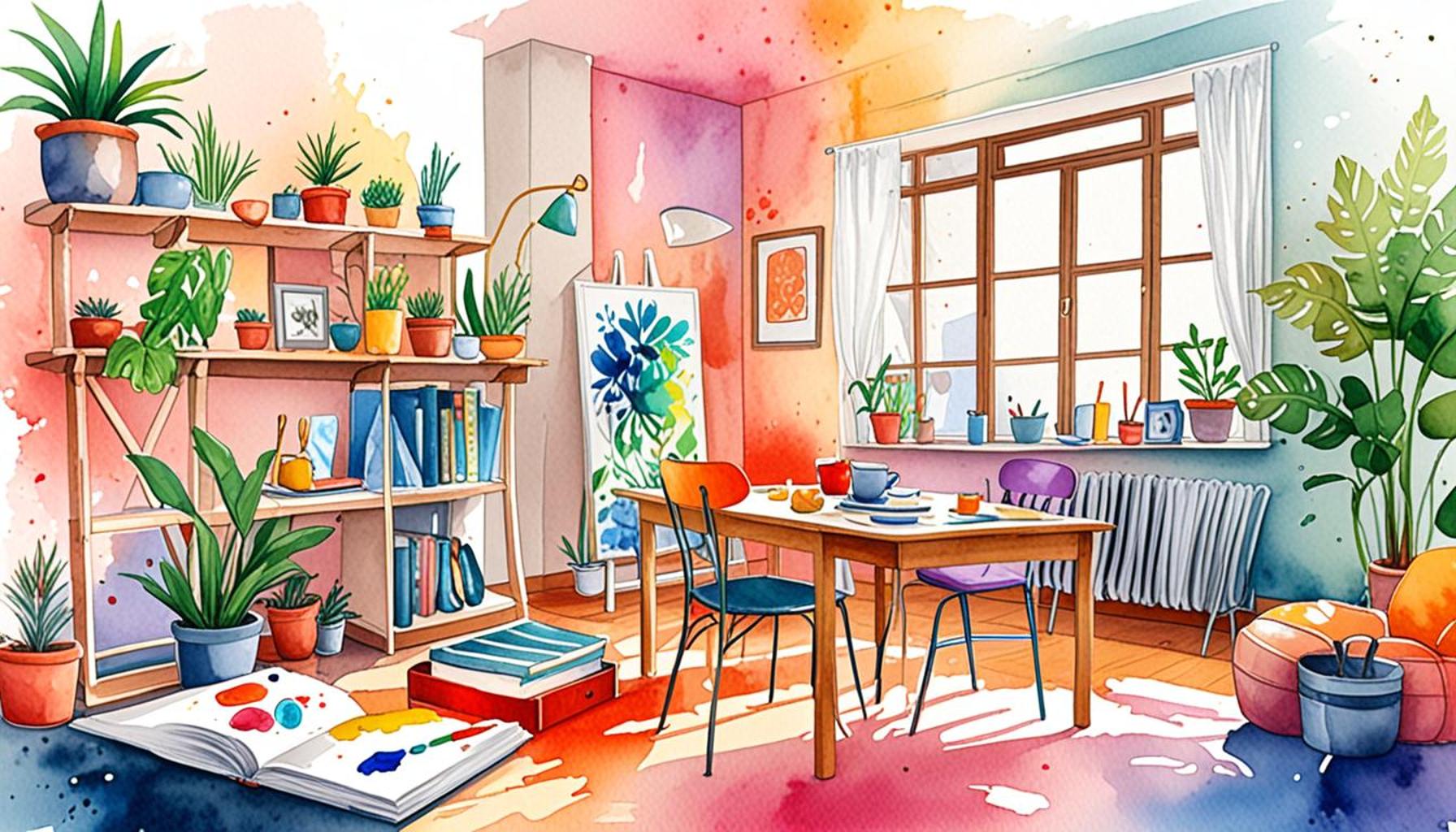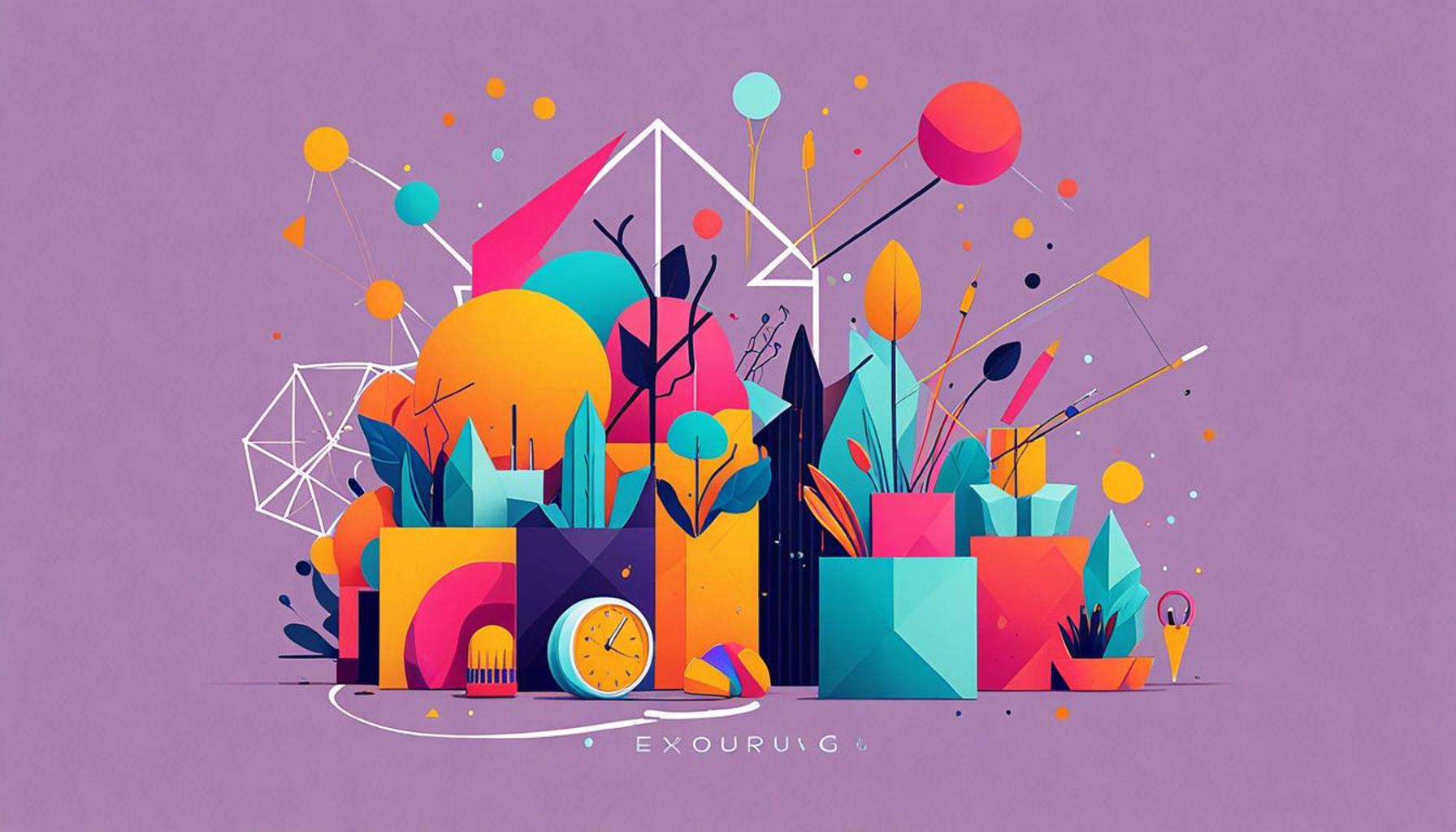The Impact of Intentional Design on Reducing Clutter and Stress

The Importance of Intentional Design
In our increasingly chaotic lives, the need for a sanctuary—be it at home or in the workplace—is paramount. The concept of intentional design serves as a vital tool in creating environments that not only showcase our personal aesthetics but also cater to our emotional and psychological needs. An intentional design approach embraces all aspects of the space we inhabit, allowing for a mindful reduction of clutter and an alleviation of stress, ultimately leading to improved mental health.
Key Aspects of Intentional Design
Let’s look closely at specific elements of intentional design that can shape a healthier environment:
- Minimalism: This philosophy encourages the elimination of excess and the celebration of simplicity. For example, adopting a minimalist approach may involve evaluating possessions and keeping only those items that offer true value or joy. By reducing distractions and visual clutter, individuals often experience enhanced focus and calmness in their surroundings.
- Functional Layouts: The arrangement of furniture and decor greatly affects the flow of a space. Designs that prioritize functionality, such as open floor plans, can streamline movement and interaction, minimizing feelings of chaos. In offices, for instance, collaborative layouts can promote teamwork while reducing the frustration of navigating crowded areas.
- Mindful Color Choices: Colors evoke emotional responses. Calming hues, like soft blues and greens, are known to lower anxiety levels and improve mental clarity. Consider how a cozy, pastel-colored room can induce a sense of peace, while vibrant colors might stimulate creativity and energy.
- Natural Elements: Integrating elements from nature—like houseplants, water features, or natural light—can significantly enhance well-being. Research suggests that exposure to nature can decrease stress levels and even boost mood, making these elements essential in both residential and corporate designs.
The Impact of Intentional Design on Well-being
Studies have demonstrated that environments crafted with care can lead to several positive outcomes, such as:
- Increased productivity levels: A well-organized workspace can help individuals maintain focus and get tasks done efficiently, impacting performance positively.
- Reduced anxiety and stress levels: Spaces that feel harmonious and inviting can serve as retreats from the pressures of daily life, contributing to overall emotional stability.
- Improved overall mental health: A thoughtfully designed space can provide a sense of control and ownership, which is crucial for mental well-being.
As we explore the extensive influence of our designed environments, it’s critical to recognize how these spaces can manifest our values and, in turn, shape our emotional states. The way we curate our surroundings is not simply a reflection of our individual identity; it is a catalyst for a more tranquil, productive, and fulfilling life. By harnessing the power of intentional design, we can cultivate spaces that nurture our well-being and help us thrive in an often overwhelming world.
DIVE DEEPER: Click here for eco-friendly organizing tips

Transforming Spaces for Serenity
The impact of intentional design extends beyond aesthetics; it encompasses the ability to create environments that significantly reduce clutter and stress. By understanding and implementing specific design principles, individuals can foster a deep sense of tranquility in their spaces. This transformation often begins with an assessment of existing environments and a commitment to embracing change.
Rethinking Clutter and Its Consequences
Clutter is not merely an eyesore; it can also lead to augmented mental strain. Research indicates that excessive visual stimuli overload our brains, contributing to feelings of chaos and anxiety. In fact, a study conducted by the Princeton University Neuroscience Institute found that the presence of numerous items in one’s environment can significantly impact cognitive function, making individuals less effective at managing tasks. Recognizing clutter’s detrimental effects motivates many to seek intentional design solutions.
Here are some common consequences of clutter in our lives:
- Decreased Focus: A cluttered space can make it challenging to concentrate, leading to diminished productivity and the inability to complete tasks efficiently.
- Increased Anxiety: Environments filled with excess items can heighten stress levels. The brain struggles to process too many stimuli, which can trigger feelings of unease.
- Overwhelmed Emotions: Clutter can encroach on our emotional well-being, making us feel weighed down not just by physical items, but by mental load as well.
Intentional Design: A Pathway to Clarity
Intentional design provides a roadmap for those seeking to alleviate the burdens of clutter and stress. A pivotal aspect of this journey is the practice of simplifying environments where we dwell. For instance, decluttering techniques, popularized by organizational experts such as Marie Kondo, encourage individuals to evaluate their belongings based on what truly adds value to their lives. By retaining only meaningful items, individuals can create visually spacious environments that cultivate a sense of peace.
Moreover, the influence of mindful design extends to how we organize spaces. Employing storage solutions that are not only practical but aesthetic—such as decorative baskets and multi-functional furniture—can enhance a room’s appearance while maintaining order. This kind of approach aligns with the principles of intentional design, allowing individuals to reclaim their spaces from chaos.
As we dive deeper into these principles, we’ll uncover specific strategies that harness the power of intentional design. From color psychology to the integration of natural elements, these strategies facilitate a harmonious balance between functionality and elegance, enabling us to create spaces that nurture our well-being.
The relationship between intentional design and its influence on clutter reduction and stress alleviation is profound and multifaceted. One key aspect of this connection is how spaces are organized. When furniture, colors, and layouts are thoughtfully arranged, they cultivate a sense of calm and order. Minimalism is a prominent design philosophy that emerges from this intentional organization. By prioritizing essential items and reducing visual noise, individuals can focus on what truly matters, significantly enhancing mental clarity and well-being.
Another essential consideration in intentional design is the choice of materials and colors. Soft textures and calming hues contribute to a serene environment that can reduce anxiety levels. For example, incorporating elements like natural wood, soft fabrics, and soothing color palettes can create a harmonious atmosphere, fostering relaxation. This is why many modern workplaces are adopting biophilic design principles, infusing nature into built environments to promote psychological comfort and productivity.
Furthermore, intentional design encourages the use of multifunctional spaces and furniture. Adapting furniture that serves multiple purposes not only saves space but also reduces the buildup of unnecessary items, leading to a clutter-free environment. This adaptability ultimately supports a lifestyle that values simplicity, allowing individuals to transition smoothly between various activities, whether it’s work, leisure, or socializing.
| Design Principle | Effects on Clutter and Stress |
|---|---|
| Minimalism | Encourages focus on essential items, enhancing clarity. |
| Biophilic Design | Brings nature indoors, promoting calm and productivity. |
Ultimately, the impact of intentional design extends beyond aesthetics; it transforms how individuals experience their surroundings. By thoughtfully curating environments, we can significantly improve our mental health and foster a sense of well-being. As awareness of the interplay between design and emotional health grows, more people are exploring how intentional design can reshape their everyday lives, creating tranquil spaces that minimize stress and reduce clutter.
DIVE DEEPER: Click here to discover more
Strategies for Intentional Design: Cultivating Calm Collaboratively
Harnessing the full potential of intentional design involves understanding and implementing a range of strategies that elevate, rather than overwhelm, our spaces. Whether in homes or workplaces, the choices made can cultivate environments that promote mental clarity and emotional resilience.
Integrating Color Psychology
Color plays a significant role in shaping our emotions and behaviors. Research indicates that certain colors can evoke specific feelings, influencing our mood and productivity levels. For instance, shades of blue and green are often associated with calmness and tranquility, making them ideal choices for bedrooms or meditation spaces. In contrast, vibrant yellows and reds can stimulate energy and creativity, suitable for workspaces or creative studios.
Intentional design encourages individuals not just to choose colors that please the eye, but to select hues that resonate—with their emotions and lifestyle choices. Incorporating a strategic color palette, therefore, can be a powerful ally in minimizing stress while endorsing focus. A room painted in calming hues, accessorized with thoughtfully selected accent colors, can promote a sense of balance, leading to enhanced well-being.
Natural Elements: Bridging the Indoor with the Outdoor
The incorporation of natural elements into our environments is gaining traction as a significant aspect of intentional design. Biophilic design, which connects individuals with nature, has proven psychological benefits. Research published in the Journal of Environmental Psychology indicates that simply adding plants to a space can boost mood, improve focus, and even enhance productivity.
By incorporating elements like houseplants, natural light, and organic materials, designers can foster an atmosphere that feels less confined and more expansive. This connection to nature not only reduces perceived clutter but also combats stress. The addition of greenery, for instance, can act as a natural air purifier while simultaneously serving as a visual grounding point that invites calm.
Efficient Spatial Planning: Redesigning Flow
Intentional design is also about the practical flow of a space. Efficient spatial planning takes into account how individuals navigate their environments—making ease of movement a priority. Open floor plans can often encourage a more liberated sense of space, while multifunctional furniture creates the flexibility often needed in urban dwellings. For example, using a coffee table as a storage unit can keep essential items neatly tucked away, while also serving as a centerpiece for social gatherings.
Moreover, the strategic arrangement of furniture can enhance overall functionality. By positioning seating arrangements to promote interaction or relaxation, space can be transformed into a sanctuary rather than a source of chaos. Such deliberate arrangements encourage individuals to engage positively with their surroundings, reducing the impulse to accumulate unnecessary items that contribute to clutter.
Digital Clarity: Designing Virtual Spaces
In today’s digital age, intentional design isn’t confined to physical spaces but extends to our virtual environments. The organization of digital files, email, and apps is equally important, as a cluttered digital space can invoke stress similar to a physical one. Implementing file-naming conventions, categorizing emails, and utilizing productivity apps can lend a sense of order and control to our daily interactions.
Stress can often stem from digital chaos, where overwhelming notifications and disorganized files can distract from focus. By applying principles of intentional design to both physical and virtual realms, individuals can create a holistic experience that nurtures calmness and fosters clarity.
DISCOVER MORE: Click here to unlock transformative daily habits
Conclusion: Embracing Intentional Design for a Balanced Life
In a world where chaos often reigns, intentional design emerges as a vital strategy to reclaim control over our environments and, ultimately, our mental well-being. The principles outlined—integrating color psychology, incorporating natural elements, and implementing efficient spatial planning—serve not merely as aesthetic choices but as foundational elements in cultivating a sanctuary free from overwhelming clutter.
As we embed thoughtful design into our homes and workplaces, we open opportunities for clarity, focus, and emotional resilience. For instance, the choice of color can transform a dreary office into a hub of creativity, while the incorporation of biophilic elements—like plants and natural light—bridges the disconnect often felt in urban settings. Furthermore, the shift towards efficient spatial planning not only maximizes functionality but also encourages meaningful interactions and a sense of tranquility.
Moreover, as digital clutter continues to mount, extending these intentional design principles to our virtual spaces is critical. By curating our digital environments with the same care we give our physical ones, we can streamline our tasks, reduce distractions, and foster a focus that enhances productivity.
Ultimately, embracing intentional design is more than about aesthetics—it’s about creating a harmonious environment that inspires peaceful living and working. As you explore your own spaces, consider how these strategies may lead you toward a healthier, more balanced life. Dive deeper, inquire further, and let your design choices not only reflect your taste but also nurture your soul.


